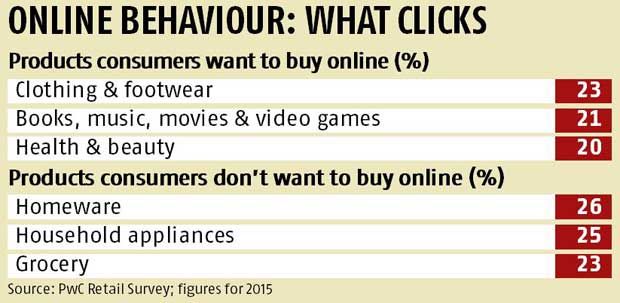Six months ago, Future Group Chief Executive Kishore Biyani was in a different frame of mind when it came to online ventures. The 55-year-old businessman, best-known for kicking off India’s modern retail revolution a decade ago, had just acquired e-tailer Fabfurnish and was putting his blueprint in place on how he proposed to move forward. His plan, he said, was to merge his offline home furnishings business with the newly-acquired venture.
For a man who’s been a fierce critic of e-commerce in India, the acquisition of Fabfurnish, his first in the online space, was billed by many as his acceptance, finally, of a trend that is rapidly gaining ground. So what has prompted Biyani to go back to his old habit of criticising online ventures? His frustration became apparent recently when he said he was planning to shut Big Bazaar Direct, a three-year-old assisted e-commerce venture.
Assisted e-commerce means shopping with the help of franchisees who take orders from consumers on a tablet for products displayed in a catalogue. Biyani had started this venture in Nagpur, subsequently expanding to smaller towns and cities, where Big Bazaar’s physical stores were not present. Citing unviability, however, he recently said that offline retail was far more profitable than the online business.
But experts say the real reason for failure of ventures such as Big Bazaar Direct is the lack of a clear differentiator in a crowded market. “There are already quite a few players operating in the e-commerce space. Some of them, such as Snapdeal, Flipkart and Amazon, are strong players which are capable of attracting a large number of consumers. The question is: How do you differentiate yourself from this lot? What is the unique selling proposition you bring to the table?” says Harish HV, partner (India leadership team), Grant Thornton India.

While Big Bazaar Direct clearly appeared to be struggling on that front, it is not the only one grappling with this issue. Most domestic big-box retailers, in fact, struggle to migrate consumers online, since the offline retail operations of the firm more often than not remain firmly entrenched in the minds of people. They are quite simply unable to make the switch in the absence of a differentiator.
As Arvind Singhal, chairman, Technopak, says, “A customer walking into a store will not think of going online. He will more likely shop there (in the store). And the one shopping online will not think of going offline. He is there (online) because the e-channel is offering him what he wants: convenience, right assortment of products, quick delivery and so on.”
Which is why identifying the right categories where an online operation can click is imperative, experts say. While Big Bazaar Direct does have quite a few categories that have migrated online — mobile phones, electronic goods, fashion, toys and so on — competition for the consumer’s wallet share within these segments is high.
Biyani demonstrated wisdom by keeping grocery out of Big Bazaar Direct, owing to the quick turnaround time that e-groceries typically demand. But the decision impeded growth, say experts.
Offline Big Bazaar stores are known largely for their value-for-money grocery operations, so consumers choosing to buy online typically looked for those products on Big Bazaar Direct and were disappointed at not finding them, resulting in poor sales.
Add to that the grim picture that e-groceries present as a category. According to a recent report on consumer trends by FICCI and PwC, grocery was the third category after homeware and household appliances where consumers did not buy online at all. Of the people surveyed in the report, 23 per cent said they did not buy groceries online, marginally behind homeware (26 per cent) and household appliances (25 per cent).
The cost factor
There are challenges on the cost front as well. Spending on discounting, brand-building and delivery — which Biyani describes as customer acquisition and fulfilment cost — remains high in India’s $10-11 billion (nearly Rs 70,000 crore) e-commerce market.
While Biyani pegged this expense at 50 per cent of the total expenditure of doing business online, experts say it is much higher for others and the cost depends on a number of factors, including the speed of delivery.
In fact, among the reasons for the e-commerce sector’s mounting losses — nearly Rs 8,000 crore in 2014-15; four times that of the previous year (2015-16 numbers have not been disclosed yet)— are deep discounts and companies increasingly taking stock of delivery themselves by setting up distribution centres offline.
While the goods & services tax, cleared by Parliament last month, will rationalise warehousing expenditure of e-commerce players to some extent, other costs such as advertising and brand-building will still remain high, say experts.
A mid-year advertising forecast by media agency Carat, released last week, reiterates this point. The forecast pegs India’s advertising growth for 2016 at 12 per cent, led by categories such as e-commerce, among others. Carat had made a similar projection earlier this year, underlining the importance of e-commerce to domestic advertising growth.

)
